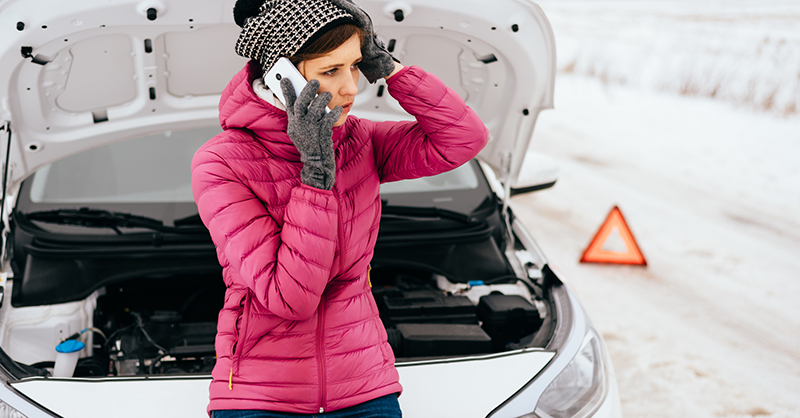13 tips for hassle-free winter performance

Most drivers know they need to get the oil changed and tires rotated every 5,000 miles or so. What about the myriad of inspections that help prepare your vehicle for winter?
Have you noticed your car is hard to start, headlights are duller and power windows operate slowly? Could be an early warning sign of a dying battery.
“Modern vehicles are wonderful and rarely break if properly maintained,” Tony Molla, vice president of communications at the National Institute for Automotive Service Excellence, “An ASE-certified professional technician will solve about 90 percent of vehicle maintenance problems and help keep your car running smoothly as you encounter harsh winter conditions.”
Or perhaps an old thermostat can cause your vehicle to overheat—yes, even in winter.
According Molla, sudden drops or jumps in temperature can cause battery problems. A weak battery can go bad overnight.
“Batteries lose their effectiveness over time,” Molla said. “The best way to prevent this sort of thing is to have the charging system checked periodically.”
Summer creates other problems that may not surface until the dead of winter, Molla said. Your fall inspection list should include engine, tires, windshields and auto body. Jot down a list of items you have noticed: slow cranking, dimming, squealing brakes, burned-out lights, cracked wiper blades.
“The more complete list of minor repairs that you give to your service provider, the more satisfied you will be,” Molla said. “The autumn inspection can help catch a problems before they leave you stranded.”
Molla suggested the following 13 items to include on your autumn maintenance checklist:
1. Do your headlights and taillights work properly? Are the high beams directed at the proper angle? Have a friend look at the brake lights as you press the pedal. Flash your headlights and high beams against a flat surface from level ground (inside your garage, for instance).
2. Are the heater and defroster working properly? Turn on the heating system to check. The problem also may be a sign that your vehicle thermostat needs to be replaced.
3. Inspect tires and the spare. Do you have a pressure gauge in the glove box? Make sure tires are properly inflated and have enough tread to grip slick roads caused by fall’s first rains.
4. Cold weather can cause increase problems such as poor fuel economy, rough idling, slow acceleration or hard starts. Have your service technician check battery water levels and the car’s charging system.
5. Get your vehicle’s battery inspected. Batteries often go bad quickly in cold weather.
6. Summer days can leach the resins out of wiper blade rubber. Old blades can scratch the windshield and blur vision. Replace hardened or crack wiper blades before the first rain creates a run on replacements.
7. Check washer fluid that is needed to clean your windshield. Early season rains may coat your windshield with dirt and grime collected on summer roads.
8. Inspect the jack. You can avoid hours of frustration on the roadside by having the right tools so you—or a passerby—have the emergency tools to help when stranded.
9. Does your vehicle tend to pull to one side or another? Your car may need its alignment adjusted. This may cause driving problems and tire damage..
10. Get the engine drive belts checked for wear and proper adjustment.
11. Have a certified technician examine the exhaust system for leaks, which may lead to deadly conditions in a closed vehicle.
12. Are you prepared for nighttime or twilight driving associated with the end of daylight savings time? Your vehicle should be equipped with emergency equipment such as flares, gloves, a blanket, flashlight and some basic tools.
13. Check your owner’s manual for manufacturer’s guidelines. Even vehicles that log few miles need regular maintenance to keep them operating properly.